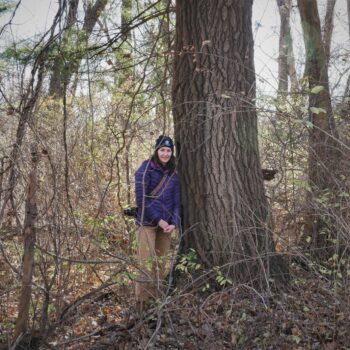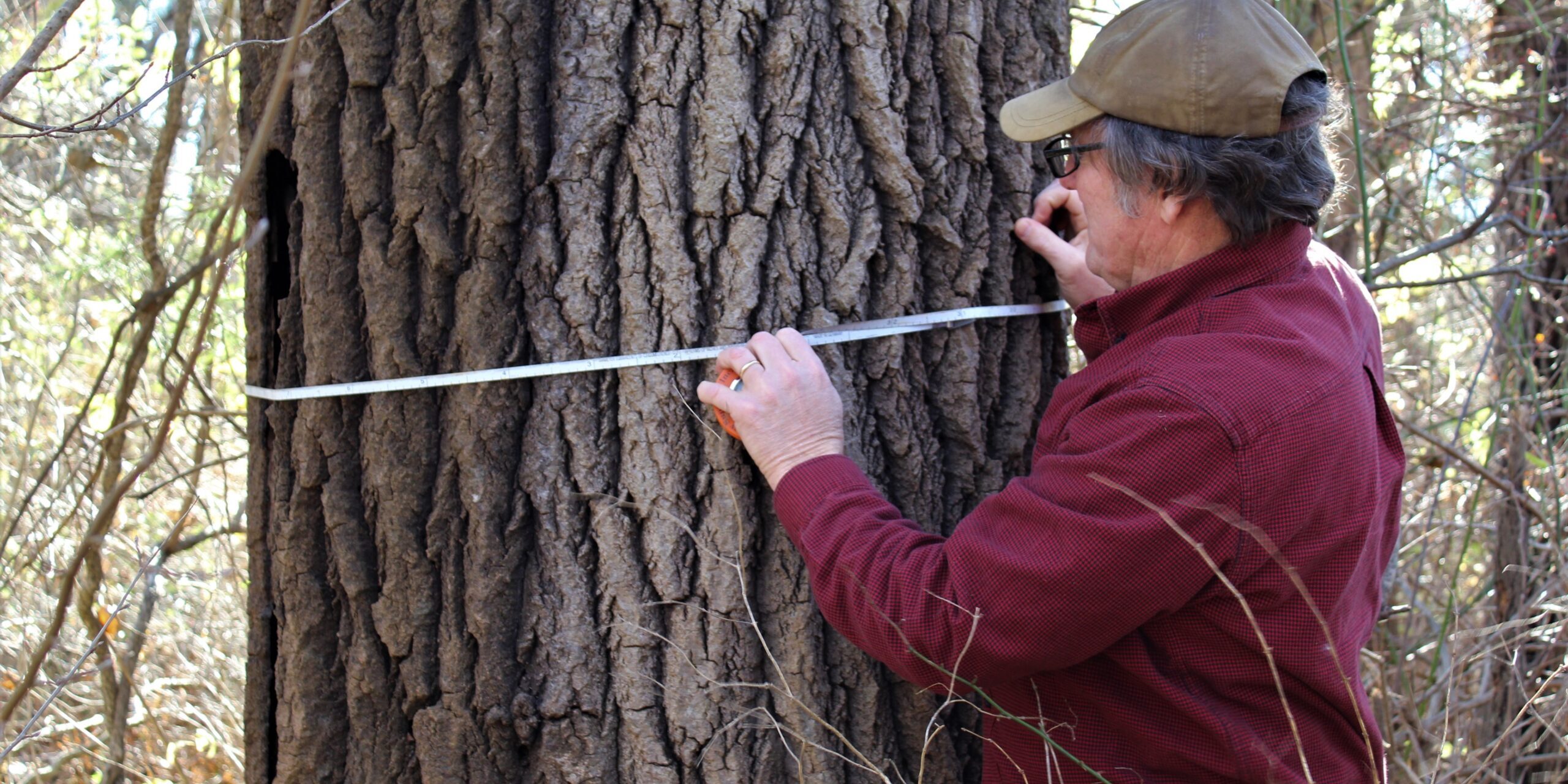Author and boat builder, Kevin Martin has been measuring trees around New England for over a decade. Kevin’s newest book, which came out this year, is called Big Trees of Northern New England. In this book, Kevin outlines countless big trees and how to get to them.
I set out with Kevin on November 10th, to identify and measure big trees in Scarborough.
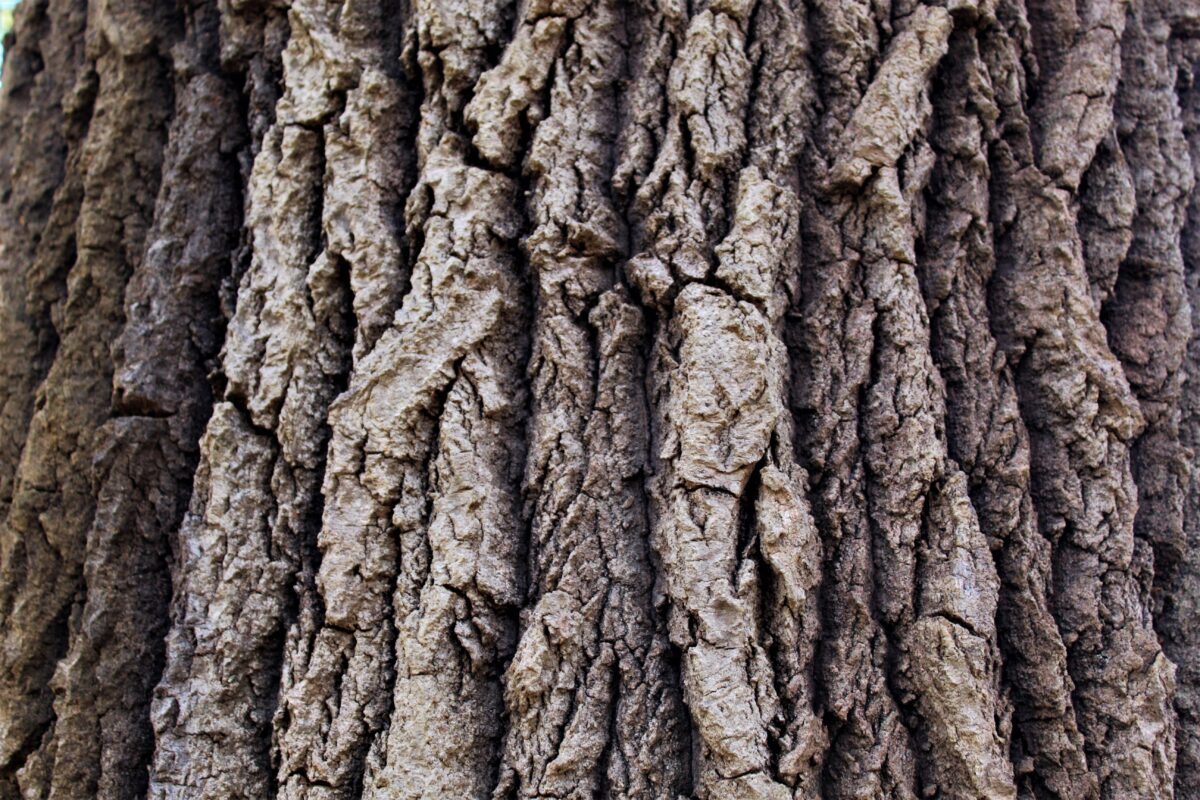
We headed to Blue Point with pines on the mind. I had seen several large pine trees which I figured could be fun to measure and to compare to other white pines. We entered the North Leg trail, passed the stand of pitch pines, and the forest changed abruptly from coniferous to deciduous. We stood among tall and straight bigtooth aspens. We quickly spotted one large tree off to the right, about 30 feet off of the trail. Just as quickly, we noticed the tree was stripped of most of its bark and mostly dead.
This bigtooth aspen caught Kevin’s eye because you don’t see many of this species at this size. The largest aspen is a quaking aspen in New Hampshire. It measures 120 inches in diameter at breast height (DBH). The largest Bigtooth aspen, also in New Hampshire, measures 118 inches in diameter and 95 feet tall.
Kevin measured this big tree at the base, and wrapped the tape measure all the way around. Luckily this tape measure has a toothed edge so that Kevin can walk all the way around the tree without having to hold the end of it. There was no way a person could put there arms around this trunk.
The bigtooth aspen at Blue Point Preserve has a diameter of 8.5 feet or 102 inches. This is only 16 inches smaller than the largest of it’s kind in New England! Kevin says “Comparatively the tree at Blue Point Preserve would be among the largest in the region”.
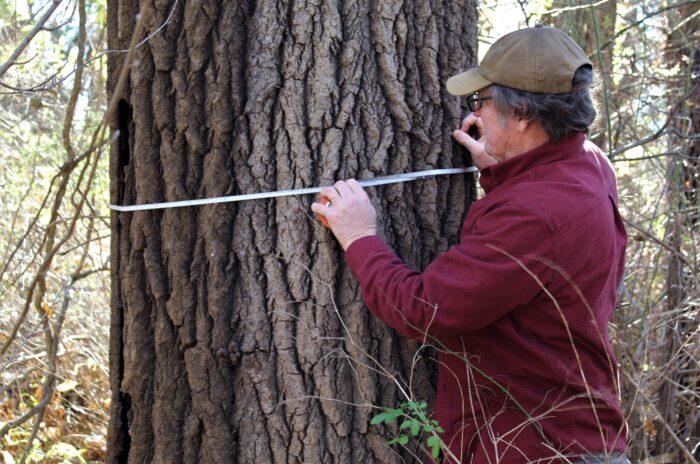
The next step to quantify this tree is measuring its height. Clinometers are devices used by foresters to calculate the merchantable height of a tree- this is the amount of the tree that can be sold and milled into lumber. This tool uses trigonometry to find angles and distances and solve a triangle formed by 3 points: the place you’re standing (100 feet back from the trunk), the base of the tree, and the top of the tree. Foresters are measuring up to the part of the stem where the diameter is about 11 inches because anything smaller than that is too small for timber.
Kevin uses a range finder to find the height of the tree which is a very easy and efficient tool. Using this device, you must stand back so that the tree is in clear view. Take a horizontal line of sight (by looking through the view finder and clicking the top button), then take a measurement at stump height (about 1 foot off the ground), and lastly, take a reading a the very top branch. The technology will then calculate the height for you.
This is not always easy due to the location of some trees. It can be very hard to get a full view of the entire tree because of understory shrubs. The range finder calculated the height of the bigtooth aspen to be 90 feet tall.
Normally, Kevin would now measure the crown size of the tree, but since it is dead, it was not measured.
The next biggest aspen at Blue Point has DBH of 5.7 feet. There are several others in this area that look relatively the same size.

We continued down the North Leg trail to find a large white pine. It sits just before the South and North legs converge on the edge of the marsh. Unfortunately, this pine would be hard to measure the DBH of because it is multi-stemmed. One must measure the diameter of each stem and use a function to determine circumference.
Kevin said that the tree was most likely affected by the pine weevil. The invasive insect caused damage at an early age, forcing the trunk to grow in multiple directions. Kevin can also tell immediately that while this is a big tree, it doesn’t measure up against other champion white pines.

In the Northeast corner of the field at Fuller Farm, two sugar maples stand side by side. These trees were planted just outside of the house that used to exist on the property. The foundation for the house can still be seen in the cluster of trees just north of these dooryard maples.
Upon first glance, these trees look average sized. We walk through the field and realize they are quite large. These maples are not quite champion size because there are a lot of large sugar maples in New England. Each tree was estimated to be around 80 feet tall. DBH was not taken.
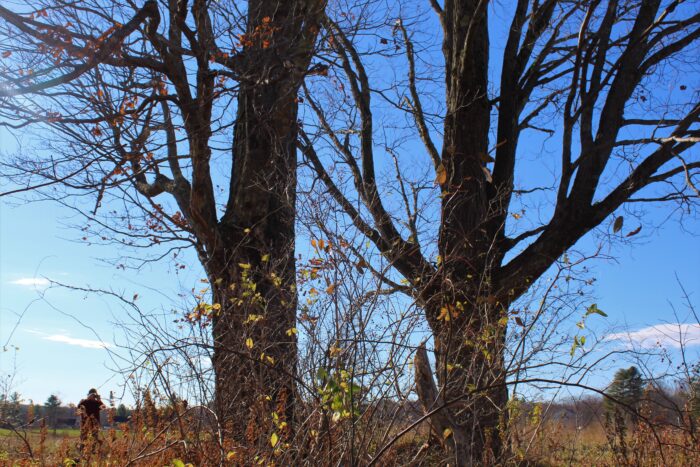
Dunston Cemetery, located off of Route 1 in Scarborough, is a great place to see some old pines. Kevin says he frequently visits old cemeteries to find big trees. These are also typically much easier to measure with a full view of the tree do too the lack of understory unlike some trees in forested habitats. This cemetery did not disappoint. One white pine measured 168 inches in DBH and was 90 feet tall. Kevin says the tree is “pretty good for overall size, not competing for the champion status but well worth noting”.
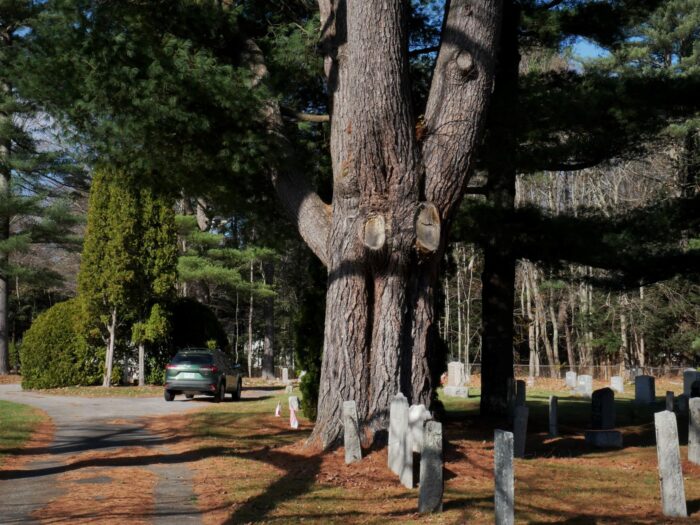
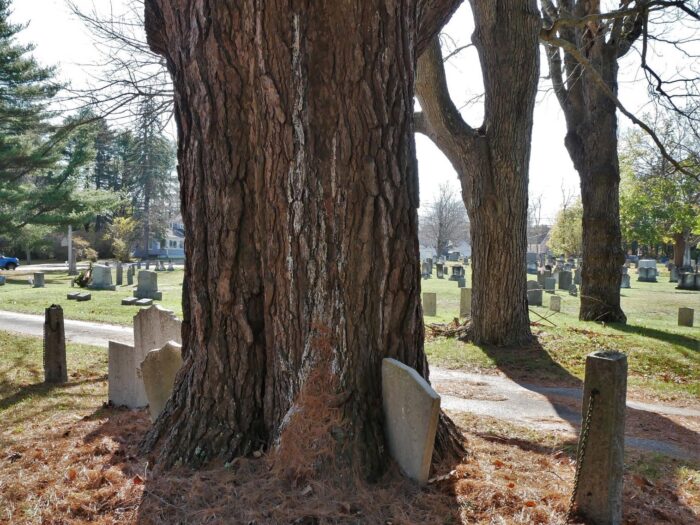
Kevin has a good eye for sizing up trees since he’s been doing it for several years. Sometimes he sees a tree that to the untrained eye looks massive, but he knows it won’t measure up to a champion tree. That’s because different species of trees reach different sizes. It is not uncommon to see a white pine over 150 inches in diameter. It is, however, very uncommon to see an aspen this big, or even over 100 inches. That is why the aspen at Blue Point could potentially rank on a regional or national level.
Kevin Martin is a boat builder and author of Big Trees of New Hampshire: Short Hikes to the Biggest Trees in New Hampshire from the Seacoast to the North Country. His new book is titled Big Trees of Northern New England. You can purchase a copy at local bookstores such as Sherman’s or online.
Join us December 5th for a presentation by Kevin on big trees.
Abby Wilson ∣ Communications and Education Specialist
